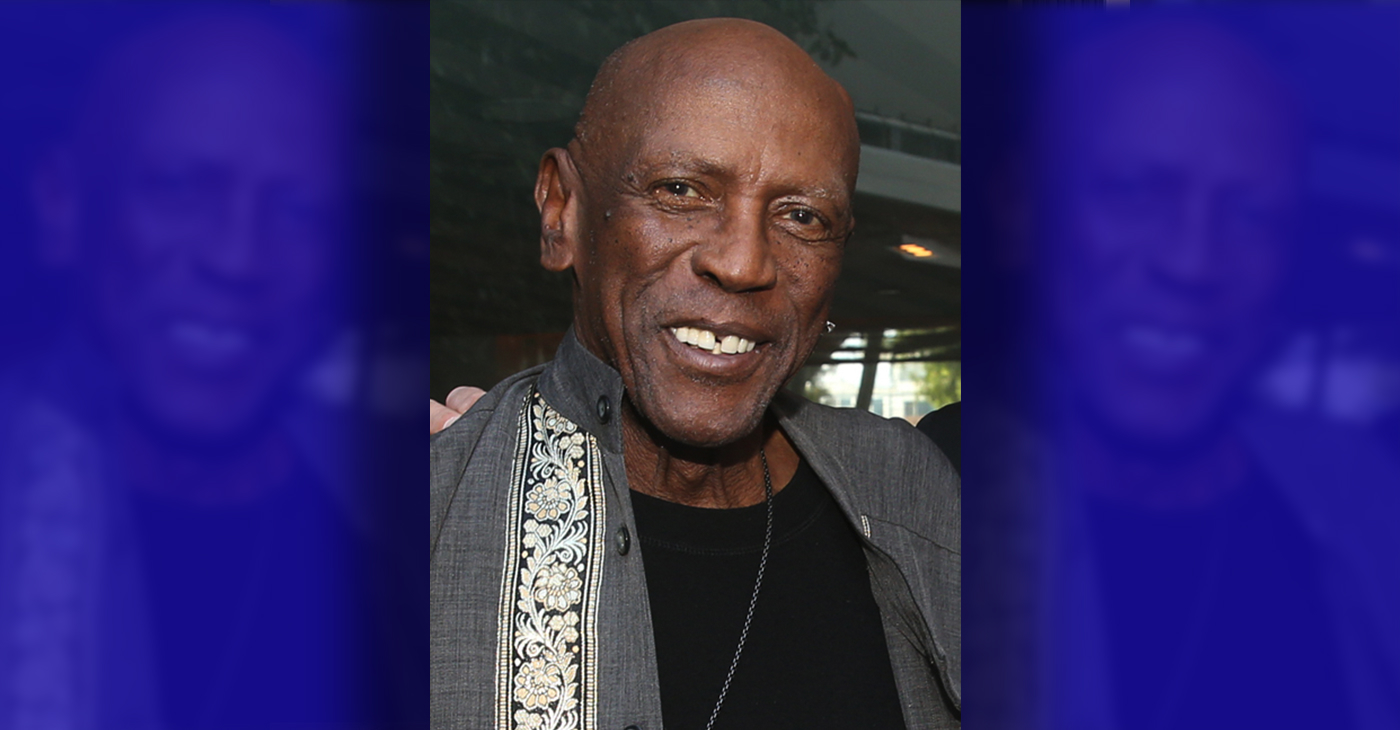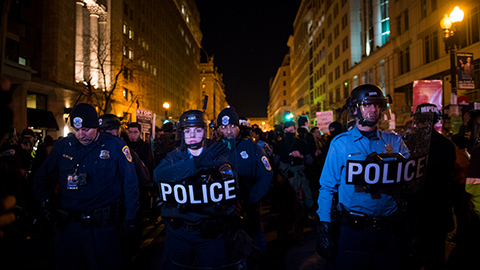#NNPA BlackPress
AUTO REVIEW: 2019 Hyundai Santa Fe Ultimate 2.0T
NNPA NEWSWIRE — “…the Santa Fe crossover that I test drove had a bolder design, new safety, comfort and convenience technology, and better sight lines and cabin storage space. All of that is a long winded way of saying the Santa Fe has been reworked for the better.”
By Frank S. Washington, AboutThatCar.com
DETROIT – There have been some big changes for the 2019 Hyundai Santa Fe. The five-passenger Santa Fe Sport is now called Santa Fe. The current long wheelbase three-row, seven-passenger model called Santa Fe has been renamed Santa Fe XL. And an all-new three-row, eight-passenger SUV is currently under development and will carry an all-new name.
What’s more, the Santa Fe crossover that I test drove had a bolder design, new safety, comfort and convenience technology, and better sight lines and cabin storage space. All of that is a long winded way of saying the Santa Fe has been reworked for the better.
The first thing I noticed about the 2019 Santa Fe was the quiet smoothness of the engine. Its ride was silky, much like an all-round air suspension. Instead, the 2019 Santa Fe had a multi-link with gas shock absorber and 24 mm stabilizer bar w/self-leveling suspension.
I had the top-of-the-line 2.0-liter direct injected turbocharged four cylinder engine that made 235 horsepower and 260 pound-feet of torque at a low 1,450 rpms. In other words, the Santa Fe 2.0T could get up and move from just about any speed. It had an EPA rating of 19 mpg in the city, 24 mpg on the highway and 19 mpg combined.
The engine was mated to an all-new eight-speed automatic transmission. Despite having two extra gears, the new eight-speeder, which was designed in-house, was lighter than the outgoing six-speed model. The automatic transmission added ratio range at both the top and bottom of output speeds allowing for extra thrust off-the-line and a quieter, more fuel-efficient dash down the interstate.
My test vehicle had an all-wheel-drive system that Hyundai called advanced. It was developed as a multi-mode scheme that provided an electronic, variable-torque-split clutch with active torque control between the front and rear axles.
The 2019 Santa Fe had an overview camera and a stop start system that was so smooth I never turned it off because of irritation. That’s rare.
The driver-selectable normal, sport and smart drive modes aided traction control in all weather conditions. Given that we got bunches of snow, followed by warmer temperatures and the accompanying slush and wet pavement and then followed by refreezing during the test drive, I left the drive mode in smart and I don’t think there was even any wheel slippage much less wheel spin.
Still, I could sense the slick ride, comfort, handling and stability of the 2019 Santa Fe. Hyundai said they were achieved through a change in suspension geometry. The major adjustment came when engineers moved the rear shocks from an angled position to upright, improving the ride and handling no matter the driving conditions.
The Santa Fe featured Hyundai’s cascading grille and composite light design with LED daytime running lights positioned on top of the LED headlights. The midsize crossover had a wide stance and it looked athletic. Hyundai keeps calling the Santa Fe an SUV but I’m not sure it can go off-road.
Its character line went from headlights to taillights and what the automaker called a daylight opening with satin surround that provided better visibility. I called it windows. There was also diamond cut 19-inch wheels. The rear featured a muscular high and taut shape. There was also a panoramic sun roof that of course never got used but I did let the shade back.
Except for the panoramic roof most of the descriptive stuff I pulled from the Santa Fe’s press material. When you are cleaning snow off a vehicle, you’re not checking character lines, trust me.
But the Santa Fe’s interior was quiet, stately and posh. It was like looking at snow, ice and windblown elements through the window from the cozy surroundings of a den. There was even the feel of a fireplace. Well, okay, that might be a bit much. But it was comfortable.
The 2019 Hyundai Santa Fe had a floating touch infotainment screen. Climate controls were underneath it and there were USB, auxiliary and 12 volt jacks and sockets beneath that along the back wall of a small storage bin at the start of the center console.
A large circular TFT speedometer dominated the space in front of the driver. It had digital speed readout within it. The fuel and temperature readouts were combination TFT and analogue gauges on either side. There was also a heads-up-display. Overall this was an uncluttered look.
This 2019 Santa Fe could be locked into four-wheel-drive. It also had a hill descent control which I thought laughable since this area is about as flat as a billiard table. But other parts of the country have hills and mountains galore.
Anyway, I climbed into the backseat and was really surprised. First, there wasn’t much of a drop off in the quality of the rear seats. They were comfortable and maintained the sleek styling of the front seats.
They were also heated and the panoramic roof covered the rear seats as well. There were privacy shades on the side windows and the green house had an airy feel because of the expansive windows.
And those seats were movable — manually. They slide forward and the backs tilted. They were also 60/40 split seats. There was a latch on the back cargo floor. I pulled it and it revealed three cargo bins under the floor.
Hyundai engineers did a number of little things to enhance the driver and rider experience. The audio/visual/navigation system screen had been tilted and positioned to reduce glare. The window switches and grab handles had been moved forward for more elbow room. The door map pockets had been reduced in size for more legroom and cup holders in the center console had been re-positioned for ease of use and the height and length of the center armrest has also been increased. None of this stuff would you necessarily notice but it makes the experience more satisfying.
There was the usual equipment. These days that includes blind spot monitoring, rear cross traffic alert, implicit is a rearview camera, smart cruise control, satellite radio, Bluetooth, premium audio system, etc.
What impressed me most was the back seat monitor reminding me to check back there every time I got out of the vehicle and the oncoming traffic alert. This wasn’t traffic from in front but vehicles from there rear. If I parked on a busy street and unlatched the door to exit, it would alert me if traffic was coming.
It was a well-equipped crossover and Hyundai continues to hold on to its DNA of offering more for the money; I thought the $39,905 sticker as tested was a pretty good price for the 2019 Santa Fe Ultimate 2.0T.
Pros:
- Lots of equipment
- Great price: $39,905
- Good ride and handling
Cons:
- Mileage less than 20 in the city
- Only front doors have pushbutton unlock
- No fully automatic power windows in rear
Frank S. Washington is editor of AboutThatCar.com
#NNPA BlackPress
Beloved Actor and Activist Louis Cameron Gossett Jr. Dies at 87
NNPA NEWSWIRE — Louis Gossett Jr., the groundbreaking actor whose career spanned over five decades and who became the first Black actor to win an Academy Award as Best Supporting Actor for his memorable role in “An Officer and a Gentleman,” has died. Gossett, who was born on May 27, 1936, in Brooklyn, N.Y., was 87. Recognized early on for his resilience and nearly unmatched determination, Gossett arrived in Los Angeles in 1967 after a stint on Broadway.
The post Beloved Actor and Activist Louis Cameron Gossett Jr. Dies at 87 first appeared on BlackPressUSA.

By Stacy M. Brown
NNPA Newswire Senior National Correspondent
@StacyBrownMedia
Louis Gossett Jr., the groundbreaking actor whose career spanned over five decades and who became the first Black actor to win an Academy Award as Best Supporting Actor for his memorable role in “An Officer and a Gentleman,” has died. Gossett, who was born on May 27, 1936, in Brooklyn, N.Y., was 87. Recognized early on for his resilience and nearly unmatched determination, Gossett arrived in Los Angeles in 1967 after a stint on Broadway.
He sometimes spoke of being pulled over by law enforcement en route to Beverly Hills, once being handcuffed to a tree, which he remembered as a jarring introduction to the racial tensions of Hollywood. In his memoir “An Actor and a Gentleman,” Gossett recounted the ordeal, noting the challenges faced by Black artists in the industry. Despite the hurdles, Gossett’s talent shone brightly, earning him acclaim in groundbreaking productions such as “A Raisin in the Sun” alongside Sidney Poitier. His Emmy-winning portrayal of Fiddler in “Roots” solidified his status as a trailblazer, navigating a landscape fraught with racial prejudice.
According to the HistoryMakers, which interviewed him in 2005, Gossett’s journey into the limelight began during his formative years at PS 135 and Mark Twain Junior High School, where he demonstrated early leadership as the student body president. His passion for the arts blossomed when he starred in a “You Can’t Take It With You” production at Abraham Lincoln High School, catching the attention of talent scouts who propelled him onto Broadway’s stage in “Take A Giant Step.” His stellar performance earned him the prestigious Donaldson Award for Best Newcomer to Theatre in 1952. Though initially drawn to sports, Gossett’s towering 6’4” frame and athletic prowess led him to receive a basketball scholarship at New York University. Despite being drafted by the New York Knicks in 1958, Gossett pursued his love for acting, honing his craft at The Actors Studio under the tutelage of luminaries like John Sticks and Peggy Fury.
In 1961, Gossett’s talent caught the eye of Broadway directors, leading to roles in acclaimed productions such as “Raisin in the Sun” and “The Blacks,” alongside legends like James Earl Jones, Cicely Tyson, Roscoe Lee Brown, and Maya Angelou. Transitioning seamlessly to television, Gossett graced small screens with appearances in notable shows like “The Bush Baby” and “Companions in Nightmare.” Gossett’s silver screen breakthrough came with his role in “The Landlord,” paving the way for a prolific filmography that spanned over 50 movies and hundreds of television shows. From “Skin Game” to “Lackawanna Blues,” Gossett captivated audiences with his commanding presence and versatile performances.
However, his portrayal of “Fiddler” in Alex Haley’s groundbreaking miniseries “Roots” earned Gossett critical acclaim, including an Emmy Award. The HistoryMakers noted that his golden touch extended to the big screen, where his role as Sergeant Emil Foley in “An Officer and a Gentleman” earned him an Academy Award for Best Supporting Actor, making him a trailblazer in Hollywood history.
Beyond the glitz and glamour of Hollywood, Gossett was deeply committed to community activism. In 1964, he co-founded a theater group for troubled youth alongside James Earl Jones and Paul Sorvino, setting the stage for his lifelong dedication to mentoring and inspiring the next generation. Gossett’s tireless advocacy for racial equality culminated in the establishment of Eracism, a nonprofit organization dedicated to combating racism both domestically and abroad. Throughout his illustrious career, Gossett remained a beacon of strength and resilience, using his platform to uplift marginalized voices and champion social change. Gossett is survived by his children, Satie and Sharron.
The post Beloved Actor and Activist Louis Cameron Gossett Jr. Dies at 87 first appeared on BlackPressUSA.
#NNPA BlackPress
COMMENTARY: D.C. Crime Bill Fails to Address Root Causes of Violence and Incarceration
WASHINGTON INFORMER — The D.C. crime bill and so many others like it are reminiscent of the ‘94 crime bill, which produced new and harsher criminal sentences, helped deploy thousands of police and surveilling methods in Black and brown communities, and incentivized more states to build prisons through a massive infusion of federal funding. While it is not at the root of mass incarceration, it significantly accelerated it, forcing a generation of Black and brown families into a never-ending cycle of state-sanctioned violence and incarceration.
The post COMMENTARY: D.C. Crime Bill Fails to Address Root Causes of Violence and Incarceration first appeared on BlackPressUSA.

By Kaili Moss and Jillian Burford | Washington Informer
Mayor Bowser has signed the “Secure DC” omnibus bill passed by the D.C. Council last month. But we already know that this bill will be disastrous for all of D.C., especially for Black and brown residents.
While proponents claim that this legislation “will make D.C. residents safer and more secure,” it actually does nothing to address the root of the harm in the first place and instead maintains a cycle of violence, poverty, and broken community ties. The omnibus bill calls for increased surveillance, drug-free zones, and will expand pre-trial detention that will incarcerate people at a significantly higher rate and for an indeterminate amount of time before they are even tried. This bill will roll back decades of nationwide policy reform efforts and initiatives to keep our communities safe and whole, which is completely contradictory to what the “Secure” D.C. bill claims it will do.
What is unfolding in Washington, D.C., is part of a dangerous national trend. We have seen a resurrection of bad crime bills in several jurisdictions across the country — a phenomenon policy experts have named “zombie laws,” which are ineffective, costly, dangerous for communities of color and, most importantly, will not create public safety. Throwing more money into policing while failing to fund preventative measures does not keep us safe.
The D.C. crime bill and so many others like it are reminiscent of the ‘94 crime bill, which produced new and harsher criminal sentences, helped deploy thousands of police and surveilling methods in Black and brown communities, and incentivized more states to build prisons through a massive infusion of federal funding. While it is not at the root of mass incarceration, it significantly accelerated it, forcing a generation of Black and brown families into a never-ending cycle of state-sanctioned violence and incarceration. Thirty years later, despite spending billions each year to enforce these policies with many of these provisions remaining in effect, it has done very little to create long-term preventative solutions. Instead, it placed a permanent moving target on the backs of Black people, and the D.C. crime bill will do the same.
The bill calls for more pretrial detention. When our loved ones are held on pretrial detention, they are held on the presumption of guilt for an indeterminate amount of time before ever seeing a judge, which can destabilize people and their families. According to experts at the Malcolm Weimer Center for Social Policy at Harvard University, just one day in jail can have “devastating consequences.” On any given day, approximately 750,000 people are held in jails across the nation — a number that beats our nation’s capital population by about 100,000. Once detained, people run the risk of losing wages, jobs, housing, mental and health treatments, and time with their families. Studies show that pretrial detention of even a couple of days makes it more likely for that person to be rearrested.
The bill also endangers people by continuing a misguided and dangerous War on Drugs, which will not get drugs off the street, nor will it deter drug use and subsequent substance use disorders (SUDs). Drug policies are a matter of public health and should be treated as such. Many states such as Alabama, Iowa and Wisconsin are treating the current fentanyl crisis as “Crack 2.0,” reintroducing a litany of failed policies that have sent millions to jails and prisons instead of prioritizing harm reduction. Instead, we propose a simple solution: listen to members of the affected communities. Through the Decrim Poverty D.C. Coalition, community members, policy experts and other stakeholders formed a campaign to decriminalize drugs and propose comprehensive legislation to do so.
While there are many concerning provisions within the omnibus bill, car chases pose a direct physical threat to our community members. In July 2023, NBC4 reported that the D.C. Council approved emergency legislation that gave MPD officers the ability to engage in vehicular pursuits with so-called “limited circumstances.” Sgt. Val Barnes, the head of MPD’s carjacking task force, even expressed concern months before the decision, saying, “The department has a pretty strict no-chase policy, and obviously for an urban setting and a major metropolitan city, that’s understandable.” If our law enforcement officers themselves are operating with more concern than our elected officials, what does it say about the omnibus bill’s purported intention to keep us safe?
And what does it mean when the risk of bodily harm is posed by the pursuit itself? On Saturday, Feb. 10, an Eckington resident had a near-miss as a stolen car barreled towards her and her dog on the sidewalk with an MPD officer in pursuit. What responsibility does the city hold if this bystander was hit? What does restitution look like? Why are our elected officials pushing for MPD officers to contradict their own policies?
Just a few summers ago during the uprisings of 2020, we saw a shift in public perspectives on policing and led to legislation aimed at limiting police power after the highly-publicized murders of loved ones Breonna Taylor and George Floyd — both victims of War on Drugs policing and the powers gained from the ’94 crime bill. And yet here we are. These measures do not keep us safe and further endanger the health of our communities. Studies show that communities that focus on harm reduction and improving material conditions have a greater impact on public safety and community health. What’s missing in mainstream conversations about violent crime is the violence that stems from state institutions and structures that perpetuate racial and class inequality. The people of D.C. deserve to feel safe, and that includes feeling safe from the harms enacted by the police.
Kaili Moss is a staff attorney at Advancement Project, a national racial justice and legal organization, and Jillian Burford is a policy organizer at Harriet’s Wildest Dreams.
The post COMMENTARY: D.C. Crime Bill Fails to Address Root Causes of Violence and Incarceration first appeared on BlackPressUSA.
#NNPA BlackPress
Mayor, City Council President React to May 31 Closing of Birmingham-Southern College
THE BIRMINGHAM TIMES — “This is a tragic day for the college, our students, our employees, and our alumni, and an outcome so many have worked tirelessly to prevent,” Rev. Keith Thompson, chairman of the BSC Board of Trustees said in an announcement to alumni. “We understand the devastating impact this has on each of you, and we will now direct our efforts toward ensuring the smoothest possible transition for everyone involved.”
The post Mayor, City Council President React to May 31 Closing of Birmingham-Southern College first appeared on BlackPressUSA.

By Barnett Wright | The Birmingham Times
Birmingham-Southern College will close on May 31, after more than a century as one of the city’s most respected institutions.
“This is a tragic day for the college, our students, our employees, and our alumni, and an outcome so many have worked tirelessly to prevent,” Rev. Keith Thompson, chairman of the BSC Board of Trustees said in an announcement to alumni. “We understand the devastating impact this has on each of you, and we will now direct our efforts toward ensuring the smoothest possible transition for everyone involved.”
There are approximately 700 students enrolled at BSC this semester.
“Word of the decision to close Birmingham Southern College is disappointing and heartbreaking to all of us who recognize it as a stalwart of our community,” Birmingham Mayor Randall Woodfin said in a statement. “I’ve stood alongside members of our City Council to protect this institution and its proud legacy of shaping leaders. It’s frustrating that those values were not shared by lawmakers in Montgomery.”
Birmingham City Council President Darrell O’Quinn said news of the closing was “devastating” on multiple levels.
“This is devastating for the students, faculty members, families and everyone affiliated with this historic institution of higher learning,” he said. “It’s also profoundly distressing for the surrounding community, who will now be living in close proximity to an empty college campus. As we’ve seen with other institutions that have shuttered their doors, we will be entering a difficult chapter following this unfortunate development … We’re approaching this with resilience and a sense of hope that something positive can eventually come from this troubling chapter.”
The school first started as the merger of Southern University and Birmingham College in 1918.
The announcement comes over a year after BSC officials admitted the institution was $38 million in debt. Looking to the Alabama Legislature for help, BSC did not receive any assistance.
This past legislative session, Sen. Jabo Waggoner sponsored a bill to extend a loan to BSC. However, the bill subsequently died on the floor.
Notable BSC alumni include former New York Times editor-in-chief Howell Raines, former U.S. Sen. Howell Heflin and former Alabama Supreme Court Chief Justice Perry O. Hooper Sr.
This story will be updated.
The post Mayor, City Council President React to May 31 Closing of Birmingham-Southern College first appeared on BlackPressUSA.
-

 Activism4 weeks ago
Activism4 weeks agoOakland Post: Week of March 27 – April 2, 2024
-

 #NNPA BlackPress4 weeks ago
#NNPA BlackPress4 weeks agoCOMMENTARY: D.C. Crime Bill Fails to Address Root Causes of Violence and Incarceration
-

 #NNPA BlackPress4 weeks ago
#NNPA BlackPress4 weeks agoMayor, City Council President React to May 31 Closing of Birmingham-Southern College
-

 #NNPA BlackPress4 weeks ago
#NNPA BlackPress4 weeks agoBeloved Actor and Activist Louis Cameron Gossett Jr. Dies at 87
-

 Community1 week ago
Community1 week agoFinancial Assistance Bill for Descendants of Enslaved Persons to Help Them Purchase, Own, or Maintain a Home
-

 Activism3 weeks ago
Activism3 weeks agoOakland Post: Week of April 3 – 6, 2024
-

 Business1 week ago
Business1 week agoV.P. Kamala Harris: Americans With Criminal Records Will Soon Be Eligible for SBA Loans
-

 Activism2 weeks ago
Activism2 weeks agoOakland Post: Week of April 10 – 16, 2024
























































